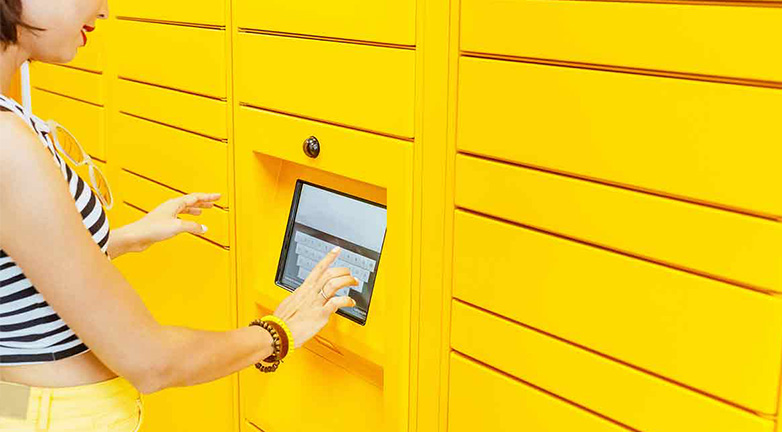ASCM Insights

Parcel Lockers Ease Urban Gridlock
By Anne Goodchild, Ph.D.
Whether you’re on the sending or receiving end of a package, it’s understandable to be worried about the price tag of urban last-mile delivery, which is estimated to gobble more than half the total cost of shipping goods. To mitigate that hit to the bottom line, it’s important to think strategically about how your supply chain interacts with the city grid — and the inevitable traffic that snarls it. Clearly, you don’t dictate how these things function; but you do have some control over how effectively you navigate them.
Recently, we have been studying parcel lockers at the Urban Freight Lab at the University of Washington Supply Chain Transportation and Logistics Center. The lockers are a logical extension of moves you’ve likely already made around consolidation and delivery density in the parts of the supply chain wholly (or mostly) under your control. In a warehouse or on a factory floor, smart design minimizes the amount of movement — and, therefore, time — needed to get the job done. The same principle holds true for last-mile urban goods delivery.
In a congested city, delivering door-to-door at multiple addresses (and floor-to-floor inside urban towers) requires a lot more moving around than delivering to a single parcel locker serving multiple recipients. Parcel lockers may help mitigate the last-mile double whammy of hefty failed first delivery rates and truck dwell times. For package receivers, these issues make you wait longer to get what you need. For carriers, their costs are a clear detriment to the balance sheet.
Our recent parcel locker pilot test, sponsored by Parcel Pending, in an urban tower in downtown Seattle demonstrates proof of concept. We found that a locker delivery reduces total delivery time in the tower by 78 percent when compared to traditional delivery. And there were zero failed deliveries to the locker. Of course, lockers won’t always slash delivery speeds by 78 percent: Our pilot captured a best-case scenario when the driver had a single package to deliver and then returned directly to the loading bay after delivery. But strategically sited lockers have the potential to offer substantial time-savings. Logically speaking, how could they not?
It’s also telling that our pilot was a joint project with businesses including Kroger, Ford Motor Company and Nordstrom. Along with carriers such as UPS and the U.S. Postal Service, these members of the Urban Freight Lab understand the bottom-line imperative to engage with cities to solve problems by investigating l high-impact, low-cost solutions for businesses delivering goods in urban settings and cities trying to manage limited curb and parking space.
Case in point: Look no further than the explosion in Amazon-branded lockers in 7-Eleven convenience stores, Whole Foods Markets, universities, offices and residential buildings in cities nationwide. (The company has also launched Hub, which accepts packages from anyone.) Clearly, lockers show potential for cost savings, with analysts predicting the retail behemoth will move even more toward lockers and hubs to help slash skyrocketing shipping costs.
Given the employee time lost in sorting packages and contacting staff when goods arrive, businesses are also hungry for solutions to more efficiently manage incoming deliveries. Even multinational corporations with highly complex supply chains that typically rely on truckload transport can receive shocking numbers of one-off packages in the form of pricey expedited shipping — items that could be managed via locker.
Lockers may not make sense for every company and don’t work in all scenarios. But in many cases, they improve the status quo, and anything that creates options can help. Companies could also consider density drivers such as pop-up pick-up points (a low-tech option) or trucks that serve as roving lockers (a more high-tech vision).
Bottom line: To make supply chains as effective as possible, professionals must think creatively about urban goods delivery and navigating the urban grid. Without innovative approaches, traffic congestion in cities will only become costlier to business. Those that contemplate innovations such as lockers now are more likely to survive and thrive.
Anne Goodchild, Ph.D., is a professor of civil and environmental engineering at the University of Washington and an expert in international freight and logistics.